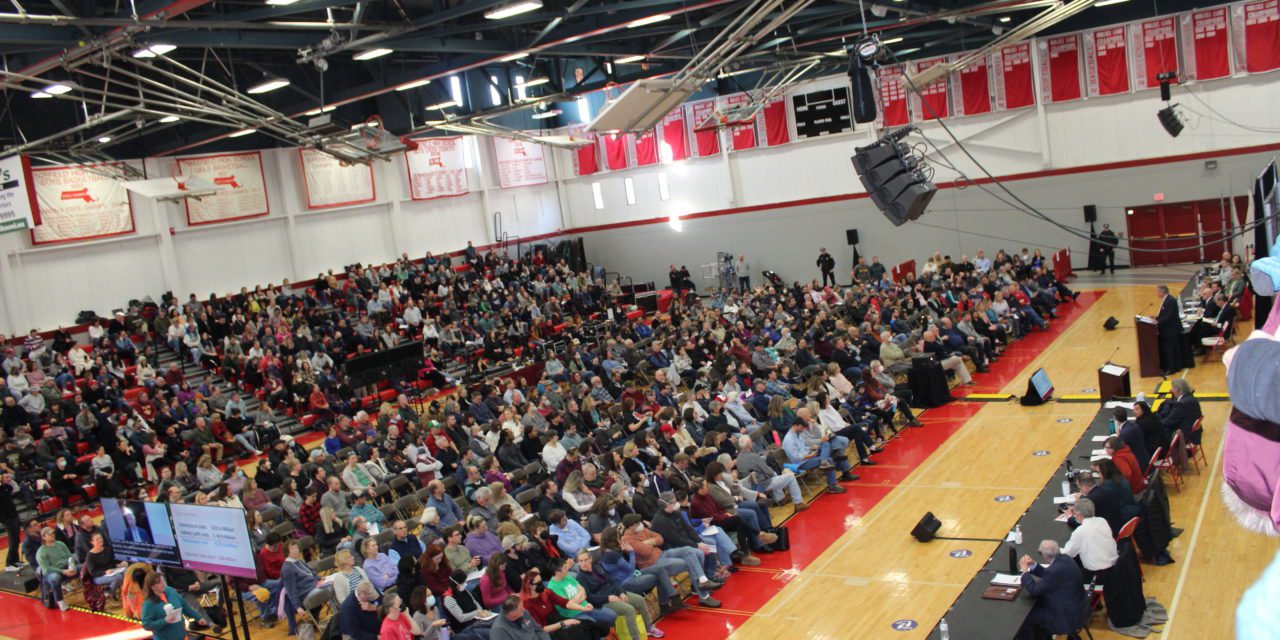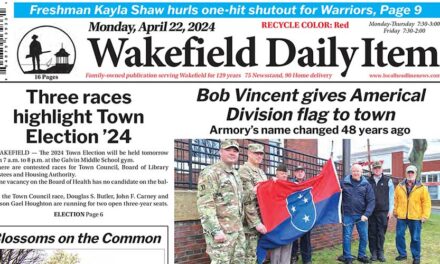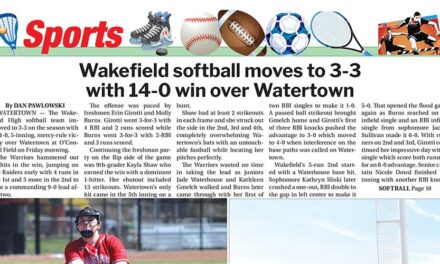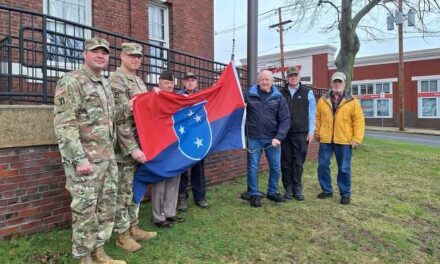A CROWD of 1,325 people attended Saturday’s Special Town Meeting. (Mark Sardella Photo)
By MARK SARDELLA
WAKEFIELD — The proposed plan to build a new Wakefield Memorial High School at a cost of $273.5 million will now go to a Special Election on March 11 after 1,231 pro-high school voters packed Saturday’s Special Town Meeting and overwhelmed the 42 opponents in attendance.
The Special Town Meeting, scheduled to start at 9 a.m., got underway more than 30 minutes late, after a decision was made to wait for those who were in line by 9 a.m. to check in and take their seats in the high school field house, even though several hundred voters were present on time.
There were few surprises at Saturday’s Town Meeting, which lasted about two hours once it finally got underway. The lone article on the warrant was to decide whether to build a new high school at a price tag of $273.5 million.
The meeting began with a series of testimonials from high school teachers and administrators as to the deficiencies in the current facility.
World Language coordinator Erin Manzi spoke of the variation in classroom sizes and the high school building’s outdated ventilation system.
Science and Technology coordinator John Henry talked about the limits that the current building places on the “learning experience” that can be provided. A new high school, he said, would “provide students with the ability to meet 21st century challenges.”

CHRISTINE RIOUX
High school superintendent Amy McLeod described “isolated hallways” with “little adult supervision” in the current school, which “creates stress and disorientation.” The new layout, she said, would have “collaborative breakout spaces” that will allow students to “feel independent while being supervised.”
High school Facilities Director Tim O’Brien spoke of deficiencies in the high school’s mechanical, electrical and plumbing systems. The exterior of the building is deteriorated and not insulated, he said. The roof is in need of replacement.
O’Brien talked about the goal of creating a “green building” that will have solar panels, all-electric heating and cooling systems and electric vehicle charging stations.
Permanent Building Committee chairman Joseph Bertrand said that his committee reviewed over a dozen possible sites for a new high school before concluding that the Shaun F. Beasley Track and Field behind the current building was the best option.
He also discussed several possibilities that the PBC considered for addressing the issues at high school, including a “code upgrade” an addition/renovation and new construction. He said that the committee determined that the best option was new construction
Bertrand blamed the COVID pandemic for a large escalation in construction costs, which he said caused the price tag of the project to balloon from an original estimate of $220 million to the current $273.5 million.
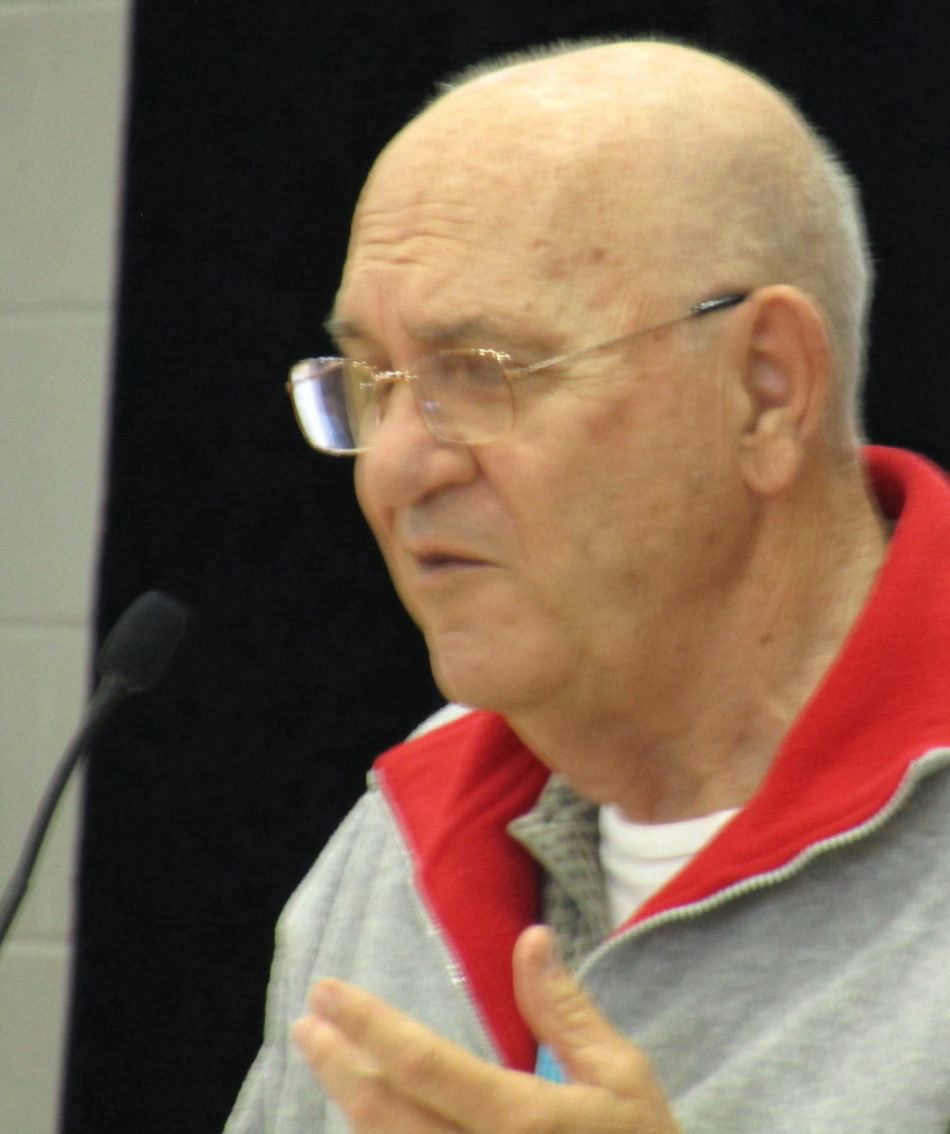
CHARLES McCAULEY
School Superintendent Doug Lyons said that the planned new high school would address current and future space needs and provide multiple spaces that the community can also use. A “No” vote, he claimed, could result in loss of the school’s accreditation.
Town Administrator Stephen P. Maio talked about the project timetable if the voters approve the plan. Construction would begin in January of 2024, he said, and the new school would open in January of 2027. Work on the fields would take place after that.
Maio also reviewed project costs and the impact to taxpayers. He said that “contingencies” were built into the budget, so there should be no further cost increases. He also displayed a chart showing the tax impact on a home valued at $550,000.
School Committee Chairman Thomas Markham talked about “a new, safe and energy efficient building.”
Town Councilor Julie Smith-Galvin, who also chairs the Environmental Sustainability Committee, said the ESC unanimously supported the project, which she maintained would use 60 percent less energy than the current building.
Town Councilor Jonathan Chines said that the Town Council “unanimously supports” the project, adding that, at 60-years-old, the “old, tired, worn-out” high school had “outlived its useful life.”
Finance Committee vice-chairman Doug Butler said that a high school was the “most expensive thing a town does” adding that most residents will face that cost just once in their lifetimes.
When the Town Meeting was opened to comments from the floor, Charles McCauley of Lawrence Street led off. The former School Committee member said that he would be voting “No” on the proposed project. He listed all if the local schools that have been built since he has been paying taxes.
Contrary to Butler’s claim, McCauley said that this would be the second high school that his taxes have financed. “There are a lot of us senior citizens,” he said, adding that when their homes deteriorate, they fix them.
“We have other options,” he said of the school plan. “Exercise them.”
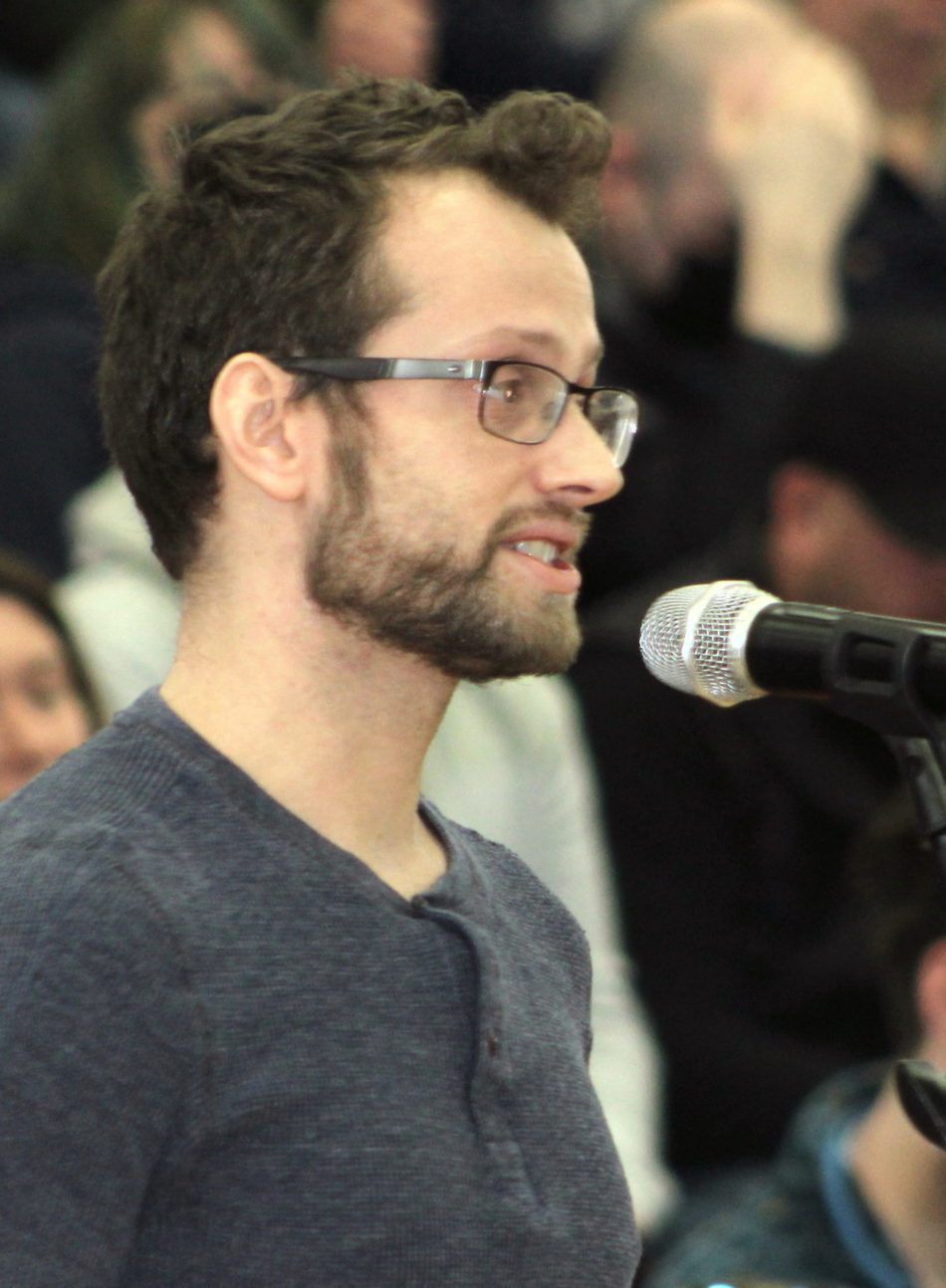
COLBY JACKSON
Christine Rioux of Houston Street wanted to know why the PowerPoint showing the tax impact of the project only went up to the year 2027. She pressed Maio on the tax impact for the years 2028-2047.
Maio acknowledged that during those years, the tax impact of the project on a home valued at $800,000 would be between $1,365 and $1,563 every year.
Danield Noren of Byron Street said that he supported the project, asserting that there was “no better investment than education.”
Felix Freeman said that he would be voting “Yes” because, “I can take the (tax) hit.” But he predicted that the proposed new roundabout at the intersection or Farm Street, Nahant Street and Hemlock Road “will be a disaster.”
Colby Jackson of Houston Street asserted that “No” voters would be “choosing a worse future for your children.”
A woman who identified herself only as Andrea said that she agreed with McCauley. She said that due to a disability, her pension was extremely low. She said that she did not qualify for the senior tax credit.
“For me it’s a matter of survival,” she said. “I don’t deserve to be kicked out of my house.”
Winona Manley of Linden Street said that since 1967, she has replaced roofs and windows as well as heating and plumbing systems in her own home.
“There’s no reason why that can’t be done with this building,” she said. She was also critical of how the Public Safety Building projects have been handled by the Permanent Building Committee under Joe Bertrand’s chairmanship.
Bob McLaughlin of Water Street was critical of town for not pursuing the “model school program” offered by the MSBA under which a community can re-use and adapt a recent successful school design from another community, and avoid the expense of designing a new school from scratch.
He also called the MSBA reimbursement rate “absurdly low,” noting that the MSBA paid a much larger share of the new Galvin and Woodville schools.
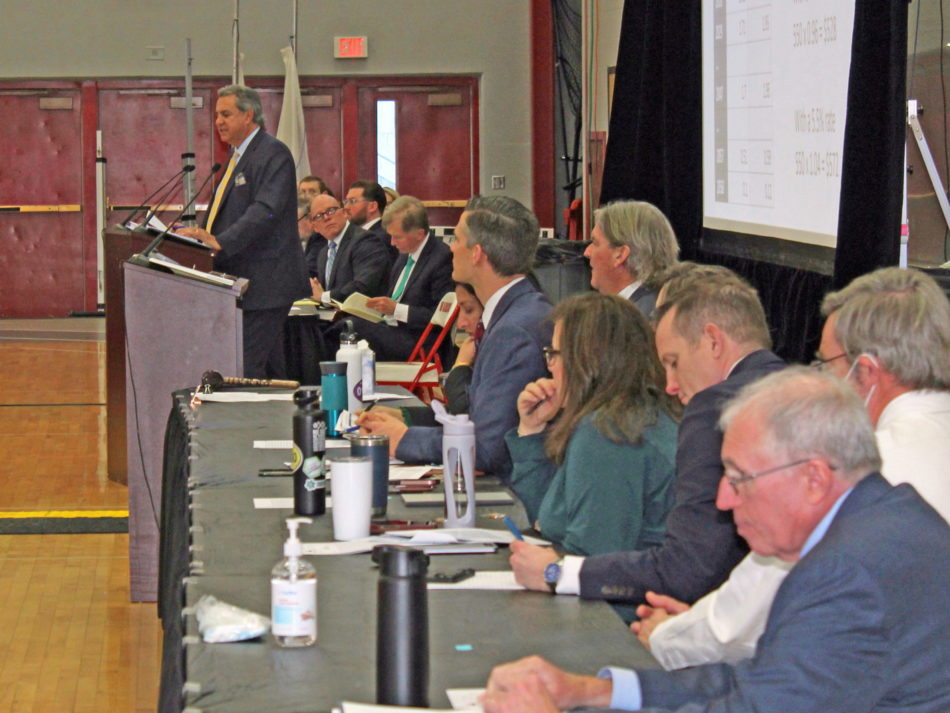
TOWN OFFICIALS listen as Town Administrator Stephen P. Maio addresses Town Meeting. (Mark Sardella Photo)
School Committee Member Kevin Fontanella, a history teacher in a neighboring town, said that previous generations had “decided to invest in public education in this town.” He asked attendees to vote “Yes.”
At 11:15 a.m., former School Committee chairman Anthony Guardia made a motion to end discussion and move the question to a vote. A chorus of voices seconded the motion.
After a lengthy process where tellers counted hands raised in favor and against moving the question, on large section of voters in the rear corner of the gym shouted that their votes had not been counted. After assuring them that they were in fact counted, it was announced that the motion to move the question passed by a vote of 1,263 in favor and 10 opposed.
The meeting then moved to a vote on the only article the warrant, asking the town to “appropriate a sum of money to the pay costs of constructing a new Wakefield Memorial High School.”
After another lengthy counting process by tellers, the same rear section claimed that once again their votes had not been counted. This time, Town Clerk Betsy Sheeran walked over and counted hands herself.
In the end, the vote was reported as $1,231 in favor of funding a new high school and 42 opposed, easily surpassing the two-thirds majority requirement.
At several points in the proceedings, Town Moderator William H. Carroll had to admonish the occasionally rowdy crowd when they engaged in clapping, cheering, booing and catcalls.
“You’re a legislative body,” he reminded them. “It’s not a pep rally.”
The Special Town Meeting was dissolved at 11:45 a.m.
The total number of voters who checked in was 1,325, according to Town Clerk Betsy Sheeran.

